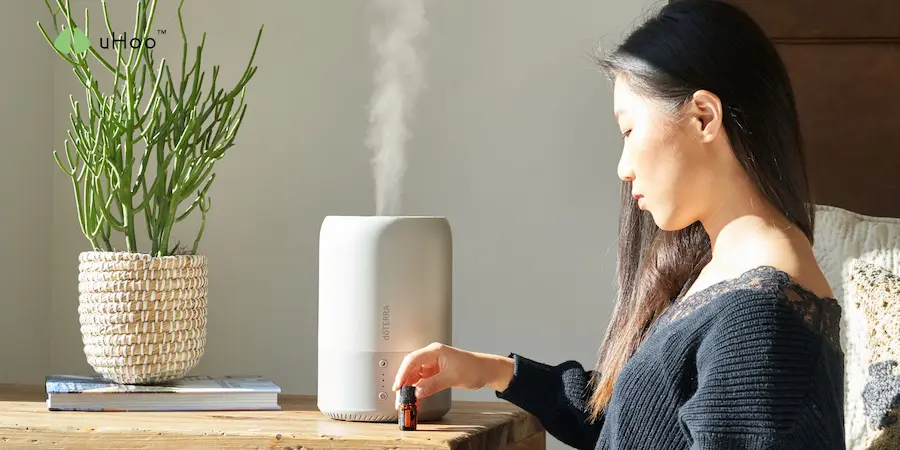Maintaining healthy indoor air quality is crucial for overall well-being. One often overlooked but highly effective solution for improving the air you breathe is the use of a humidifier. These devices work to add moisture to the air, offering a range of benefits that go beyond simple comfort. By understanding how humidifiers work and the ways in which they contribute to better indoor air quality, you can create a healthier environment at home or in the office.
How Do Humidifiers Work?
Humidifiers operate by releasing water vapor or mist into the air to increase the humidity level of a room. There are several types of humidifiers, each utilizing different methods to achieve this:
- Evaporative Humidifiers: These are the most common type. They use a fan to blow air over a wet wick filter, causing the water to evaporate and enter the air. The fan helps distribute moisture evenly throughout the room. Because these units rely on evaporation, they naturally self-regulate — meaning if the humidity in a room is already high, the water will not evaporate as quickly, preventing over-humidification.
- Ultrasonic Humidifiers: These devices use ultrasonic vibrations to create a fine mist of water droplets, which is then released into the air. They are typically quieter than evaporative humidifiers and can be more energy-efficient. Ultrasonic humidifiers are especially popular for use in bedrooms or nurseries.
- Impeller Humidifiers: Similar to ultrasonic units, impeller humidifiers use a rotating disk to fling water into a diffuser, creating a cool mist. They are also quite quiet but may not be as effective in larger spaces.
- Central Humidifiers: These are built into your home’s HVAC system and work to humidify the entire house. Central humidifiers are often used in larger homes or for whole-house comfort and air quality.
No matter the type, the fundamental purpose of a humidifier remains the same: to restore moisture to the air, balancing out the dry conditions that can cause discomfort and health problems.
How Do Humidifiers Help Improve Indoor Air Quality?
- Prevent Dry Skin and Irritation: During the colder months, or when using heating systems, indoor air can become excessively dry. This can lead to a range of skin issues, including dryness, flakiness, and irritation. Humidifiers add moisture to the air, which helps keep your skin hydrated and prevents it from becoming excessively dry.
- Ease Respiratory Issues: Dry air can aggravate the respiratory system, leading to dry throats, nasal congestion, and even nosebleeds. Humidifiers help maintain the mucous membranes in your respiratory system by preventing them from becoming too dry. This can alleviate symptoms of colds, allergies, and asthma, making it easier to breathe.
- Improve Sleep Quality: Dry air can lead to discomfort while sleeping, such as dry mouth, sore throat, and nasal congestion. By increasing the moisture in the air, a humidifier can help you breathe more easily at night, reduce snoring, and prevent your throat from becoming parched. A humidified bedroom can also lead to better, deeper sleep.
- Reduce Static Electricity: Dry air is a primary cause of static electricity, which can be a nuisance in the winter months. Static shocks can damage electronics, cause clothing to cling, and even irritate the skin. By using a humidifier, you help reduce the occurrence of static electricity, making your environment more comfortable and less disruptive.
- Prevent Damage to Wooden Furniture and Musical Instruments: Wood furniture, hardwood floors, and musical instruments like pianos can suffer damage when exposed to excessively dry air. Dry conditions can cause wood to crack, warp, or lose its sheen. Humidifiers help maintain optimal moisture levels, preventing damage to valuable items in your home.
- Control Allergens and Irritants: Dry air can cause airborne particles, like dust, pet dander, and pollen, to become more easily stirred up and circulate in the air. Humidified air can help trap these particles, preventing them from floating around and causing irritation. In addition, some humidifiers have filters that can help capture dust and other allergens, further improving the air quality in your home.
- Preserve Indoor Plants: Many indoor plants thrive in environments with higher humidity. If the air in your home is too dry, your plants might show signs of distress, such as dry leaves or stunted growth. By maintaining the right level of humidity, you can ensure that your plants remain healthy and vibrant.
When to Use a Humidifier
Humidifiers are especially useful during the winter months when indoor heating systems tend to dry out the air. However, they can also be beneficial in climates with low humidity, or in air-conditioned spaces where the air tends to feel dry. If you’re experiencing symptoms like dry skin, irritated sinuses, or difficulty breathing, using a humidifier can help create a more comfortable and breathable environment.
It’s important to maintain the right humidity level, as excessive humidity can also cause problems like mold growth and dust mites. Ideally, indoor humidity should be between 30-50%. To prevent over-humidifying, it’s crucial to use a humidifier with a built-in hygrometer or a separate humidity monitor to ensure the levels stay in the optimal range.
Humidifiers are simple yet powerful tools for improving indoor air quality. By adding moisture to the air, they help relieve dry skin, ease respiratory issues, improve sleep quality, and even preserve wooden furniture and plants. With the right humidity levels, your home can feel more comfortable and healthier, especially during the dry winter months.
To make the most of your efforts to improve indoor air quality, a uHoo air quality monitor can help you track and maintain the ideal humidity levels for your space.



